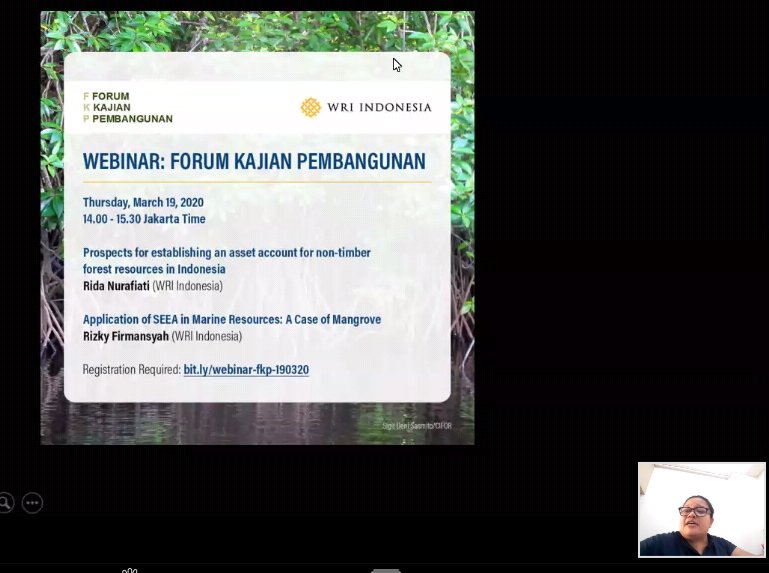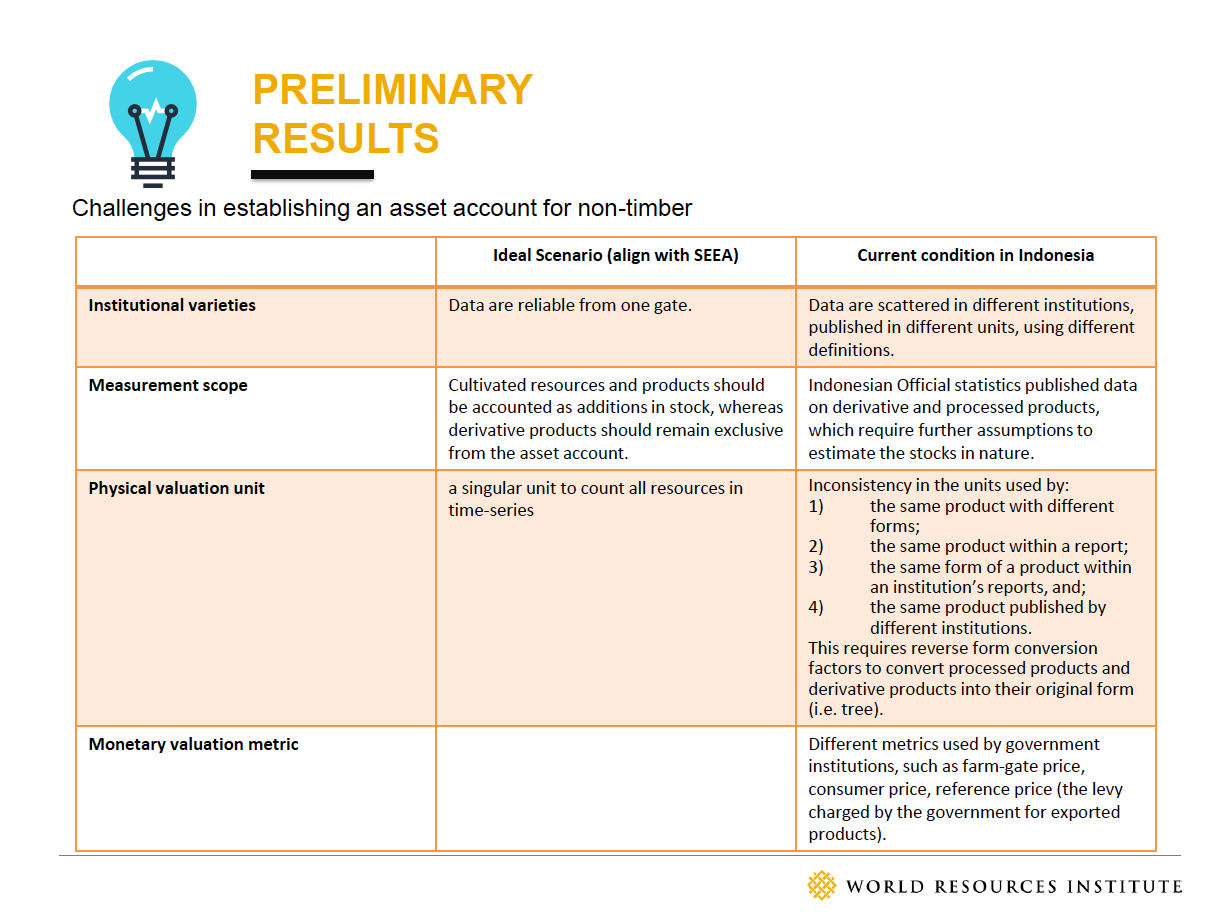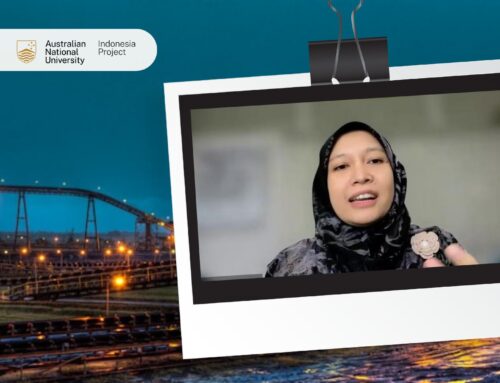The System of Environmental Economics Accounting (SEEA) is a measurement framework linking the environment to the economy. The SEEA can be used to measure the physical amount and worth of natural capital to be accounted in the national account. In Indonesia, efforts to measure natural resources used in economic production, particularly the typically-traded ones such as minerals and timber, have been made. However, the estimates of resources remaining in nature are yet to be measured. Studies were conducted by WRI Indonesia to evaluate Indonesia’s efforts in estimating the amount and value of non-timber forest product (NTFP) and marine resources, particularly mangrove, that are both essential in Indonesia’s ecosystem and economy. The studies then looked into the possibility and challenges of applying the SEEA framework. Preliminary results of the study were discussed on the FKP webinar on Thursday, 19 March 2020 with Rida Nurafiati (WRI Indonesia) speaking on the topic of NTFP and Rizky Firmansyah (WRI Indonesia) on mangroves.
Rida Nurafiati examined the NTFP statistics documented by national agencies such as BPS, Perhutani, the Ministry of Trade, and the Ministry of Agriculture. She found that data on production and prices are scattered with varying versions in units and metrics. The current condition is far from the ideal scenario, meaning that implementation of the SEEA in measuring NTFP is still very challenging.
In the case of marine resources, particularly mangrove, Rizky Firmansyah found that there are certain methods regulated by national agencies that are used to measure the quantity and quality of mangrove. These methods help in fitting mangrove into the national accounts, particularly the ecosystem extent account and the ecosystem condition account, under the SEEA framework. However, while the mangrove itself has been accounted for, other services provided by the coastal ecosystem or habitat are yet to be valued. In short, there are still many gaps to be addressed when using the SEEA framework to measure and account for the available natural resources in Indonesia. However, measuring available resources is important in order to understand their contribution to the economy and to people’s welfare. Further improvement in the SEEA framework is therefore needed before it can be a useful tool to aid in policy-making.
For the complete presentation and Q&A session, please refer to the video and materials provided.






